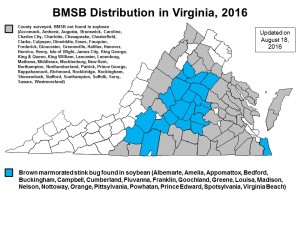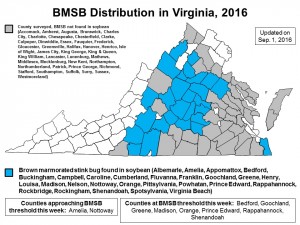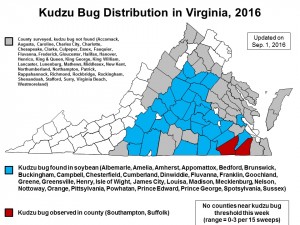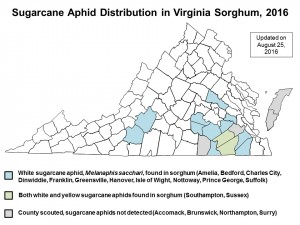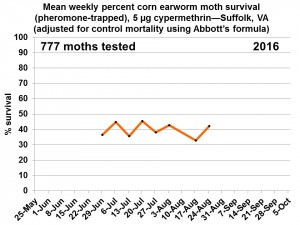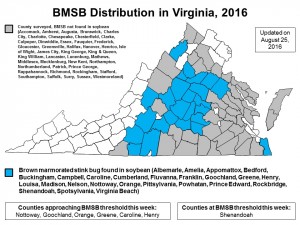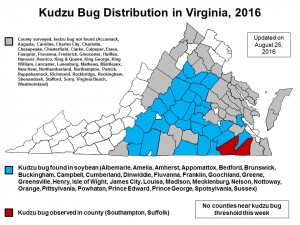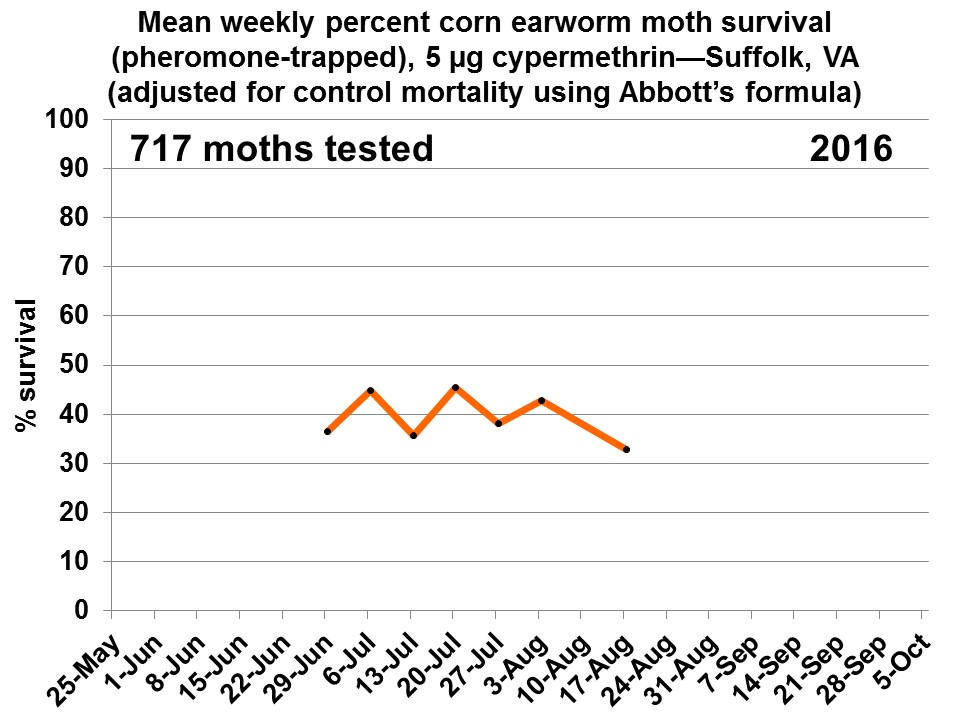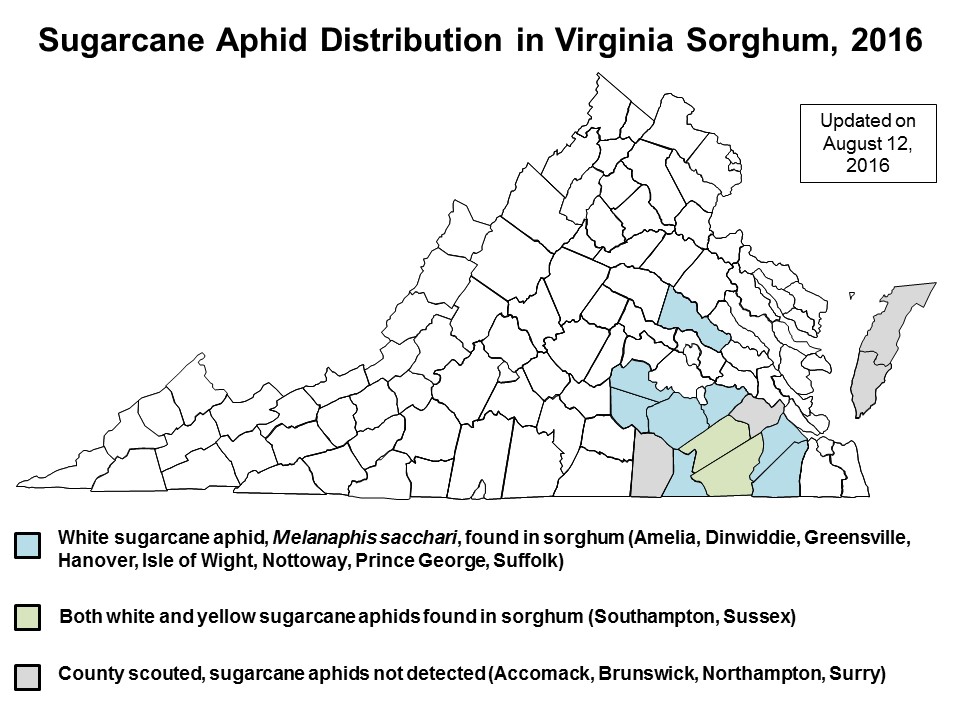White sugarcane aphid, Melanaphis sacchari, was found infesting sorghum in New Kent county this week. Thanks to ANR Agent John Allison for submitting the sample. Edit to original post: MIke Arrington and Kayla Babb (Tidewater AREC Entomology) reported finding infestations of M. sacchari in Surry County sorghum, near Bacon’s Castle (this is not on the state map).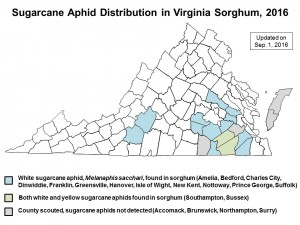
Author Archives: Sean Malone
Brown marmorated stink bug and kudzu bug in soybean: Sep. 1, 2016 update
This week, our soybean scouts Ed and Jamie reported two new counties with BMSB this season (Rockingham and Rapphannock). Eight counties had threshold levels of BMSB (3-5 adults+medium & large nymphs per 15 sweeps or 2-minute visual inspection)–see the BMSB map for details. Kudzu bugs were found in one new county–Chesterfield. Over all counties sampled, kudzu bug numbers ranged from zero to 3 per 15 sweeps–still below threshold.
Black light trap captures for the week ending Aug. 25, 2016
Corn earworm/bollworm moth captures in Suffolk averaged 23 per night, but only ranged from < 1 to 4 at other reporting locations this week. Brown marmorated stink bug was only captured at Warsaw (averaging 1.4 per night). Please see the attached data tables for more information. BLT_25_Aug_2016
Sugarcane aphid in sorghum: update for Aug. 25, 2016
Pyrethroid resistance monitoring update for Aug. 25, 2016
BMSB and kudzu bug in soybean: update for Aug. 25, 2016
This past week our scouts found four new Virginia counties with brown marmorated stink bug (BMSB) in soybean (Caroline, Shenandoah, Rockbridge, and Henry). Thresholds for field edges where BMSB is the predominant stink bug species are 3-5 adults + medium and large nymphs per 2-minute visual count, or 3-5 in 15 sweeps. The Shenandoah field (R5 growth stage) that was sampled was above threshold with 8 BMSB per 2-minute count; six counties were approaching threshold (please see the map for specifics).
Kudzu bugs were found in three new counties (Prince George [reported by ANR Agent Scott Reiter), James City, and Franklin). No counties had threshold levels of kudzu bugs (threshold is one nymph per sweep, which equals 15 nymphs per 15 sweeps).
Vial test results for Aug. 18, 2016
Black light trap report for Aug. 18, 2016
In general, corn earworm moth counts were similar to last week; brown marmorated stink bug counts were low (moderate in Warwaw). Please see the attachment for more details: BLT_18_Aug_2016
White sugarcane aphid update for August 18, 2016
BMSB and kudzu bug survey of soybean update for Aug. 18, 2016
Our scouts Ed and Jamie found brown marmorated stink bug (BMSB) in 5 more Virginia counties this week (Pittsylvania, Spotsylvania, Louisa, Campbell, and Prince Edward). All fields reported were below threshold for BMSB.
Kudzu bugs were found in 4 more counties (Pittsylvania, Mecklenburg, Spotsylvania, and Orange). All fields were below threshold.